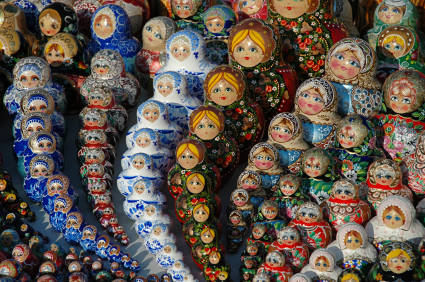
 Storytellers are creators. The stories they create are filled with characters and situations forever unique, because the story exists in its own universe, outside of a real time and place. Inside of each story is some form of thought experiment, and inside of each of these thought experiments is a question.
Storytellers are creators. The stories they create are filled with characters and situations forever unique, because the story exists in its own universe, outside of a real time and place. Inside of each story is some form of thought experiment, and inside of each of these thought experiments is a question.
These thought experiments cover many topics and disciplines. They can investigate and analyze specific times and places or offer unrestrained, expansive observations. They can present “what if” speculation. They can impart ethical guidance or record moral outrage.
These concerns and observations (often described in fiction as themes) may be compelling on their own terms, but they may also be complex or hard to grasp. Writers who choose to use narrative as a vehicle to investigate these concerns will often create a simpler question at the core of their work. This central question can function as an “engine,” propelling the story from beginning to end.

Odysseus and his men enter the home of Polyphemus, the cyclops, and eat his sheep without permission. Polyphemus retaliates by eating Odysseus’s men. Odysseus retaliates by putting out the eye of the cyclops. A case of xenia gone very wrong.
For example, one of the oldest and most durable stories in Western culture is Homer’s The Odyssey. For more than two thousand years, readers have thrilled to the struggles of Odysseus in his attempts to return to his homeland of Ithaca after the Trojan War. A concern—a theme—that dominates almost every page of The Odyssey is the use and abuse of xenia, a Greek word usually translated as the “guest-host relationship.” Every event in the story, from Odysseus’ encounter with the Cyclops to his return home to find his wife’s suitors defiling his house, is in some way a study of the reciprocal obligation between the guest and host (and all the negative consequences that happen when this obligation is not met). But the reader may not be aware of The Odyssey’s almost obsessive exploration of xenia, because throughout the book, there is a more immediate and compelling question: will Odysseus be reunited with Penelope?
A more recent story, Leo Tolstoy’s Anna Karenina, is a romance set in nineteenth-century Russia. The novel is a devastating assessment of the Russian aristocracy: a false, decadent society where French, not Russian, is the preferred language. By extension, Tolstoy then asks us to consider a more universal, deeply troubling uncertainty—can one live in a world of lies and falsehoods and still be true to oneself? But for readers of Anna Karenina, there is a central, more immediate question: will Anna find happiness with Vronsky? So a storyteller’s task of creation occurs on multiple levels. A universe is created and peopled with characters. The complex interactions between the characters and the world around them provide the thought experiment— the theme—of the work. But the driving force of the story is often the simplest of all questions: will Anna and Vronsky stay together? Will Odysseus return home?
Most stories have some form of characters recounting past events, simulating the hearsay of our natural world. Recounting conversations and events, no matter how inaccurately, is something we do all day long. This happens in the most natural way possible when we recount a story told to us by someone else. My father tells me the story of how he broke his arm while in the Army and how this broken arm kept him out of the Battle of the Bulge. I tell this story to my friends without a second thought. But sometimes we go to a second level: while telling me about his life, my father includes the story about his father, who when he was a young man, hit the high school principal—an event that expelled him from school and changed his life forever. I rely on my father’s, grandfather’s, and my own memory when I tell this story—with some effort since the story is now thirdhand. The art of oral narrative usually stops at this point because the details and point of the story get lost. It’s why oral historians consider the time period of three generations to be the upper limit for passing on reliable information.
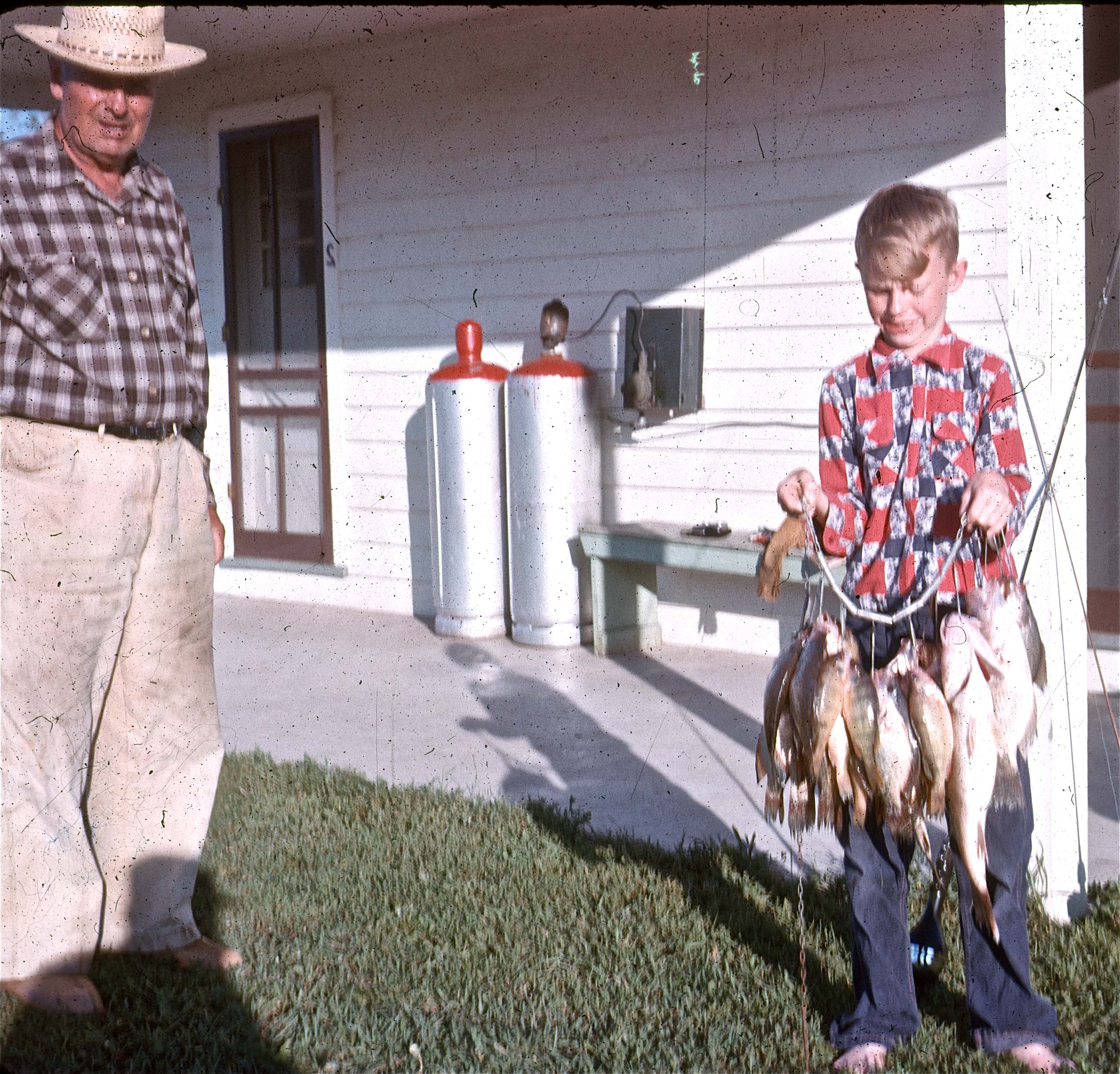
Three generations of my family: Munroe Heiss on the left, my brother holding the fish, and the shadow of my father taking the picture. We have lots of stories about my grandfather, some of them may even be true.
But when the story becomes purely a work of fiction and when written on paper (which makes it easier to follow), this three-level limitation disappears. Writers who go beyond this three-level limitation are entering a strange and exotic form of storytelling called recursive fiction. Stories of this nature are like Matryoshkas—a popular souvenir doll sold in Russia. You open one doll and find a smaller doll inside. Then there is a smaller doll inside of that. And a doll inside of that one.
Stories are constructed in stratums; on close observation one can see layer folding over layer, a universe existing like a half-cut onion sitting on a table. But where does the creator fit into this scheme? Is the storyteller hovering above the onion, impulsively cutting through its parts, revealing coils and swirls of multiple inner worlds? Instead of looking inward at the onion, suppose we look from the center out. Is the creator merely one more layer, one more level, of endlessly rising whorls? In the end, is there an ultimate creator, the ultimate storyteller? Sometimes the thought experiment, the theme that the writer wishes to explore, is this very question.
Framing one story inside another has been a device for writers almost as old as the act of writing. “The Fisherman and Genie,” from The Arabian Nights, extends to five levels, as does the “Nun’s Priest’s Tale” by Chaucer. On reading some of these stories inside stories inside stories, one wonders about the thought experiment behind them—was the writer making a statement or merely showing off his or her literary skills? Still, at some point, the philosophical implications of these “nested narratives” became obvious. Writers who were mathematically inclined saw the possibilities of using these stories to describe a concept called infinite regression. Jonathan Swift puts the idea succinctly into a single verse:
So, naturalists observe, a flea
Has smaller fleas that on him prey;
And these have smaller still to bite ‘em;
And so proceed ad infinitum.
Poetry, a Rhapsody
 Despite how some writers might feel as they write a story, fictional characters have as much free will as marionettes. Fictional characters must speak, bend, jump, and are in every way controlled by the master above them, who is holding and pulling the strings. Most writers try to camouflage these strings. After all, the more we believe that characters have free will, the more emotional jeopardy they are in, and the more we worry about their welfare. If I think of AnnaKarenina as a thematic critique of 1870s decadent Imperial Russia, why should I care what happens to her? But if I think of Anna as a woman, flesh and blood, a woman forcibly kept from her child, a woman who is trapped, with no way out…as she walks slowly to the train tracks, I want to shout: “Watch out, Anna! Don’t do it!”
Despite how some writers might feel as they write a story, fictional characters have as much free will as marionettes. Fictional characters must speak, bend, jump, and are in every way controlled by the master above them, who is holding and pulling the strings. Most writers try to camouflage these strings. After all, the more we believe that characters have free will, the more emotional jeopardy they are in, and the more we worry about their welfare. If I think of AnnaKarenina as a thematic critique of 1870s decadent Imperial Russia, why should I care what happens to her? But if I think of Anna as a woman, flesh and blood, a woman forcibly kept from her child, a woman who is trapped, with no way out…as she walks slowly to the train tracks, I want to shout: “Watch out, Anna! Don’t do it!”
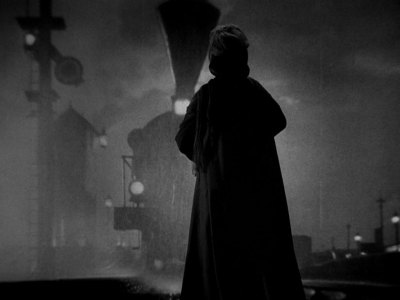
But writers of nested narratives, for the most part, choose not to follow the normal set of tricks that make a reader believe what he or she knows not to be true. Nested narratives almost always have a contrived feel about them. The process is not only inherently confusing (what story am I in now?) but is also a forcible tug at the reader’s suspension of disbelief. Instead of whispering to you, “Pay no attention to the man behind the curtain,” these stories open the curtain, emphasizing the construction and artificiality of the entire work.
What is gained from this approach is that nested narratives call attention to the question of who is charge. In a simple story, the writer of the piece is the person in charge. But when you have stories inside stories, a bizarre and confusing situation occurs as the characters then become their own authors. And nested narratives imply, by extension, that one can look upward instead of downward. Who is to say that the writer is the final arbiter? What if there is a puppetmaster over his head? And another over him? Can this succession of masters extend forever? Endless succession. Worlds within worlds. Worlds without end.
Religions are largely collections of stories and essays that debate different aspects of this question, understanding that the best or most appealing explanation of endless succession conveys legitimacy and, therefore, power. Some religions accept the concept of infinite layers. Other religions, like Christianity, refuse to consider endless succession. God is God, Alpha and Omega, the ultimate puppetmaster. Despite, or perhaps to defend this view, the Bible is largely preoccupied with variations on the question of who has final control. Indeed, an entire chapter in the Old Testament, Job, is devoted to the contemplation that we are being manipulated by forces we will never understand.
In the New Testament, Jesus seems to be of various minds about how to respond to questions involving fate and individual free will. In John 2:12-22, Jesus storms through the synagogue, fighting and chasing away the moneylenders. But later in John 18:36, Jesus is the ultimate pacifist, explaining that his kingdom is not of the Earth. Throughout most of the Gospels, Jesus appears to have complete knowledge of his future. But as he is dying (Mark 15:34), he cries to the heavens: “Father, why have you forsaken me?” If one gives up trying to consolidate these various views, one might suspect that the Jesus found in the Gospels is like a marionette, yanked and twisted all kinds of directions by a collection of writers with very different agendas. It’s the downside to being a marionette—you have no control over who is holding the strings.
Jesus is a vessel filled with metaphors: the savior, the child, and the son. It’s easy to forget that he is not the only child in this story. God himself, at least this version of God, is also a child, or at least a creation by writers who are long dead and are as real or fictional to us as their creations. They created God, who in their story then creates man. Genesis says that man was made in the image of God, but as one considers closely the series of Matryoshka dolls called the Bible, it becomes clear that the God of the Bible was also made in the image of man. Created and creator—similar but different. Distinctions are lost.

Mary Shelley was fascinated by the puzzles and questions provoked by infinite regression, in particular, the ambivalent positioning of the author somewhere between the levels of creation, hovering over one world and at the same time being under another. The story of Frankenstein is famous as an allegory for the danger of creating a force one cannot control. But Frankenstein’s monster was not animated by electricity and the fusion of spare parts from dead bodies but by the application, by certain rules, of ink to paper. And it is easy to forget, and this is a key point, that Victor is as much a creation as his more famous monster. The creator of both Victor Frankenstein and his monster was Mary Shelley.
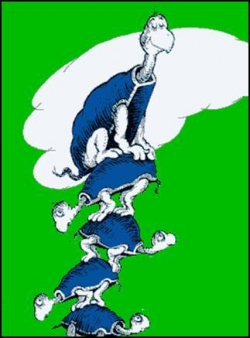
Dr. Seuss’s Yertle the Turtle demonstrating (almost) infinite regression
One might think that when Mary Shelley wrote Frankenstein, she would be satisfied with describing two levels of formation—three if you include Shelley herself. Shelley creates Victor Frankenstein who creates the monster. But Mary Shelley was far more ambitious. A clue to her approach can be found in the introduction to her second edition, where she says: “Every thing must have a beginning, to speak the Sanchean phase; and that beginning must be linked to something that went before. The Hindoos give the world an elephant to support it, but they make the elephant stand upon a tortoise.” Shelley is using a Hindu parable to describe her version of infinite regression.
The overall plot of Frankenstein is simple. Victor Frankenstein, a brilliant and overreaching student, fashions a living creature from the parts of dead bodies. His creature, never named, learns to read and write and becomes aware of who he is and who made him. After refusing to produce a mate, Victor and his creation become bitter enemies. Victor Frankenstein is eventually driven to manic obsession, and following the trail of the creature he created, dies from exposure and exhaustion in the desolate Arctic.
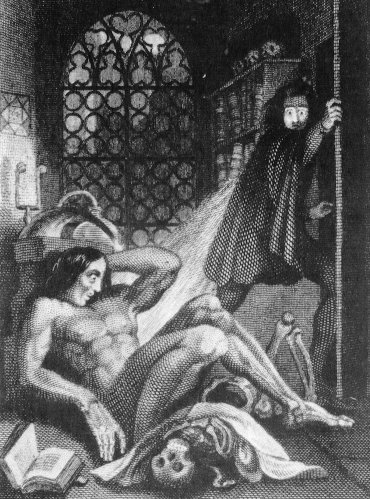
An illustration from the frontispiece for 1831editon of Frankenstein
But let’s look at this novel as a sequence of framing stories, or more picturesquely, a series of Matryoshka dolls. The outermost story is told by a captain of a ship, Robert Walton, who writes in his journal of his quixotic attempt to sail to the North Pole. While battling the Arctic weather, Walton finds a man, Victor Frankenstein, half-dead on the ice. On reviving, Victor gives Walton his account how he came to be stranded. Inside of this account, we have the monster’s story (told earlier to Victor) about how he learned to read and write by watching the DeLaceys, a family exiled from Paris and living in a cottage in Switzerland. Not satisfied with these three levels of begats, Shelley continues her narrative within narrative. As the monster’s story continues, he recounts the account of the DeLacey family and how they fled from Paris after defending a Turkish man unfairly accused of a crime. Inside of this story is the story of DeLacey’s son, Felix, who loves the Turks’ daughter, Safie. And finally, inside of the account of Felix and Safie, we learn about Safie’s mother, who was abducted and sold into slavery. This last “wisp” of a story measures only five sentences. In each of these stories, there is a common element of inequality between the characters who interact with each other. Parent to child, accuser to fugitive, native to foreigner, master to slave—there is a disparity of power found in every story.
In addition to Shelley’s interest in exploring different ways the strong can abuse the weak, she also allows for a playful variation in the narrative itself. Somewhere between the third and fourth level of these stories, the monster assumes the role of narrator. Frankenstein’s monster may rail against forces he cannot control, but for a good portion in the novel, he gets to be a storyteller getting the pleasure and satisfaction of opening and playing with his own set of Matryoshka dolls.
Frankenstein, living up to its own metaphor, became a creature that its author battled to control. Thirteen years after its original publication, Mary Shelley published a new edition, altering key elements of the text. In the original novel, Victor Frankenstein’s great sin was not creating life; it was in choosing to be a bad parent. Victor’s neglect and abandonment of his creature are the cause for the disasters that follow, not his hubris in playing God. Perhaps after the death of her husband, Percy, and the loss of two of her children, Mary decided that free will played too much a second fiddle to insensible fate. In the revised 1831 edition, Victor Frankenstein states: “Destiny was too potent, and her immutable laws had decreed my utter and terrible destruction.” The irony for Victor was that never at any time did he have free will, being a fictional character and completely subject to the caprice of the author, who as she grew older, began to suspect that the concept of free will was greatly overrated.
As Mary Shelley said herself, no creation comes from nothing; every creation must have its antecedent. “Invention…does not consist in creating out of void…the materials, in the first place, must be afforded.” Shelley found her “materials” in John Milton’s epic poem, Paradise Lost. Obeying Shelley’s dictum that invention does not come from a void, Milton found much of his “materials” in Greek myths. Casting them in a Judeo-Christian framework, a hugely effective cover for his potentially heretical explorations, he masterfully stated the essential problem raised by the act of creation:
“Did I request thee, Maker, from my clay
To mould me man? Did I solicit thee
From darkness to promote me…?”
—Adam, Paradise Lost, Book X 743-45

Milton’s Paradise Lost reinvents and conflates two myths in particular, Prometheus and Pygmalion. Both myths concern themselves with the act of creation and the subsequent unstable boundaries between the creator and the created. In the first myth, Prometheus, a Titan, creates man out of clay. There is an associated legend of him giving fire to man; the two stories coalesce with the image of Prometheus breathing fire, the breath of life, into man. In the second myth, a sculptor, Pygmalion creates a statue named Galatea, a statue so beautiful he falls in love with it. A prayer to Venus is granted, and the statue comes alive. In Ovid’s version of the myth, Galatea’s obedience to Pygmalion is complete; she falls in love with Pygmalion with her first breath. In 1912, George Bernard Shaw reworked the story, this time giving Galatea, now named Eliza Doolittle, a mind of her own. In a famous passage, after enduring repeated insults from her Pygmalion, Henry Higgins, she explodes in anger:
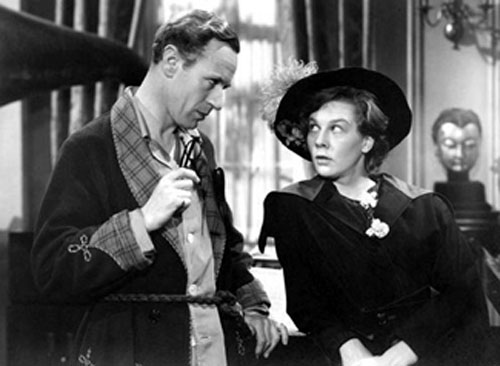
Leslie Howard and Wendy Hiller in the 1938 film version of Shaw’s ‘Pygmalion.’
ELIZA
…I’d like to kill you, you selfish brute. Why didn’t you leave me where you
picked me out of—in the gutter? You thank God it’s all over, and that now
you can throw me back again there, do you?
[She crisps her fingers, frantically]
HIGGINS
[looking at her in cool wonder]
The creature IS nervous, after all.
And we find ourselves back in the world of Frankenstein. Eliza is the monster, cruelly treated by her parent. And as much as Eliza would hate the idea, she will never be free of Higgins, just as Higgins will always be with Eliza because they are narratively joined. Eliza is the response to a question, a calling from Higgins, just like Galatea was an answer to Pygmalion’s silent prayer. It’s how a story works. Eliza and Higgins are eternally part of the apparatus of the story.
A writer who has spent his career reveling in the quirks and oddities of narrative mechanisms is John Barth. His story “Lost in the Funhouse,” is not precisely recursive fiction, since Barth feels no need to restrict himself to the rather formal pattern of producing a story inside a story. Instead, he dances from one level to another in a joyful stream of consciousness that mimics the creativity of writing itself. Barth’s choice of metaphor to describe the creative act of storytelling is to compare it to wandering inside the funhouse of an amusement park. While in the funhouse, his character, Ambrose, reaches the mirror room and looks into the mirrors:
“You think you are yourself, but there are other persons in you…In the funhouse mirror-room you can’t see yourself go on forever, because no matter how you stand, your head gets in the way. Even if you had a glass periscope, the image of your eye would cover up the thing you really wanted to see.”
In this paragraph, Barth sums up the predicament. The problem is not infinite regression, nor Hindu turtles, nor Matryoshka dolls. It’s more pragmatic than that. For Barth, we will never be able to see ourselves go on forever because our head, our egos, our own self-will will always block our view. Another way of looking at this is that because we are only a small part of what God is, we can see only part of the view, never the whole. If we could see everything, we would be God. But then there would be no stories to tell, no thought experiments, no mysteries, because everything would already be known. And telling a story to yourself is practice, not pleasure.
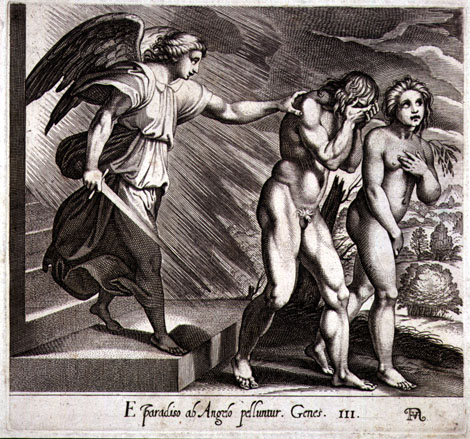
In Milton’s Paradise Lost, Adam is in blissful union with God until he eats the fruit of knowledge, and his new self-knowledge causes a separation. But it is exactly this separation, this true awareness of his limitation, that enables, or impels Adam, to question his place in the world. It is this same limitation that impels an author to ask a question, and craft an answer in the form of a story.
Writers who use narratives about origins and beginnings will always have a special ability to explore the mysteries of our universe. Each creator must have his creation: Frankenstein and his monster, Galatea and Pygmalion, Higgins and Eliza—eternal dualities of parent to child, artist to his art, teacher to pupil. And implied in these narratives is the unwritten but clear possibility that we, as readers, may be one more Matryoshka doll, positioned in a universe of endless succession. Is God truly the alpha and omega, found both at the beginning and the end of this eternal chain, or are these worlds within worlds simply a construct, divorced from any reality of the physical world?
Do we live a universe of Matryoshka dolls? Is it truly ‘turtles all the way down’? Who knows. The one thing I’m certain about is that a storyteller needs an audience, and an audience needs a storyteller. Each is essential to the other, and if we love a good story, perhaps that’s all we need to know.

A version of this essay was published in the South Carolina Review.



5 thoughts on “Frankenstein And The Matryoshka Chain”
Wonderful piece. That’s a perfect analogy for that novel. I tend to speak of novels that are as dense and recursive as Frankenstein as being fractal, but the doll imagery is a useful way to approach it. I’ve never taught the book, but I teach Wuthering Heights, which is similarly structured (though much more concerned with narrative unreliability, which Isn’t an issue on Shelley’s plate, I think; maybe you disagree). I also like your point about the author’s concerns vs the reader’s concerns, though the reader may also bring larger questions to the narrative, including questions the writer isn’t focused on. Additionally, Shelley is providing a clever commentary on Milton. If we consider the triad of Adam, Satan, and God and apply it to the relationship of Victor and his creation, you can see Victor as Adam, violating the injunction against forbidden knowledge, as well as Creator. The monster’s innocence is Adamic, but, since Victor sees himself as God-like, the monster also stands in for Satan, corrupting Victor’s plans, destroying his family, and usurping the narrative, even becoming, like Satan for Milton, the most compelling and sympathetic character. Thanks for posting this.
Thank you so much. Sorry it took so long to get back to you – I had done something to my website so I wasn’t seeing any comments after posting. Anyway, I agree with everything you were talking about, and the novel is so brimming with ideas one could write five other essays on the novel without bringing up any of the things we’ve mentioned.
Lokke, Christ on the Cross shouts “My God, my God, why have you forsaken me?” because, according to some, he is reciting the 22nd Psalm, which begins with those words; no further words are quoted in the New Testament because it was assumed that anyone reading it would know and not need the entire text right there, which ends on a much more positive note:
28 For the kingdom is the LORD’S: and he is the governor among the nations.
29 All they that be fat upon earth shall eat and worship: all they that go down to the dust shall bow before him: and none can keep alive his own soul.
30 A seed shall serve him; it shall be accounted to the Lord for a generation.
31 They shall come, and shall declare his righteousness unto a people that shall be born, that he hath done this.–Don Riggs
I’ve always found “nested narratives” fascinating, and Gothic fiction seems to be fond of them. MELMOTH THE WANDERER, of course, closely contemporaneous with FRANKENSTEIN, does the same thing although with fewer layers.
Hi Margaret, do you remember if all of the nested narratives shared the same basic theme as they do in Frankenstein? From the length of time it took me to answer you, I guess you have nine years to respond 🙂